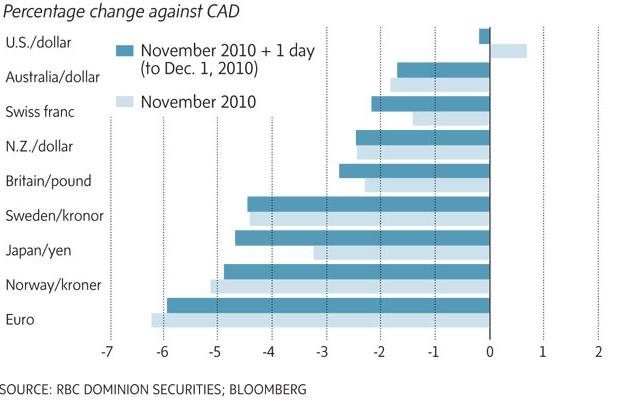

You are a customer and these transactions do not establish a principal/agent relationship or any other relationship that may create a heightened duty for us. You acknowledge that the parties to these exchange rate transactions engaged in arm’s-length negotiations. Again, you have no interest in any profit associated with this activity and those profits are solely for our account. You should assume we have an economic incentive to be a counterparty to any transaction with you. We also may take proprietary positions in certain currencies. You will have no interest in any profits. When our pre-hedging and hedging activity is completed at prices that are superior to the agreed upon execution price or benchmark, we will keep the positive difference as a profit in connection with the transactions. You acknowledge that we bear no liability for these potential price movements. These transactions may affect the price of the underlying currency, and consequently, your cost or proceeds. These transactions will be designed to be reasonable in relation to the risks associated with the potential transaction with you. Such activities may include trading ahead of order execution. In connection with our market making and other activities, we may engage in hedging, including pre-hedging, to mitigate our risk, facilitate customer transactions and hedge any associated exposure. The level of the fee or markup may differ for each customer and may differ for the same customer depending on the method or venue used for transaction execution. The price provided may include profit, fees, costs, charges or other mark ups as determined by us in our sole discretion. We provide all-in pricing for exchange rates. The exchange rate you are offered may be different from, and likely inferior to, the rate paid by us to acquire the underlying currency. Exchange rates offered by other dealers or shown at other sources by us or other dealers (including online sources) may be different from our exchange rates. You acknowledge that exchange rates for retail and commercial transactions, and for transactions effected after regular business hours and on weekends, are different from the exchange rates for large inter-bank transactions effected during the business day, as may be reported in The Wall Street Journal or elsewhere. If we assign an exchange rate to your foreign exchange transaction, that exchange rate will be determined by us in our sole discretion based upon such factors as we determine relevant, including without limitation, market conditions, exchange rates charged by other parties, our desired rate of return, market risk, credit risk and other market, economic and business factors, and is subject to change at any time without notice. dollar became an important international reserve currency after the First World War, and displaced the pound sterling as the world's primary reserve currency by the Bretton Woods Agreement towards the end of the Second World War.1Exchange rates fluctuate, at times significantly, and you acknowledge and accept all risks that may result from such fluctuations. Since 1971, all links to gold have been repealed. From 1934, its equivalence to gold was revised to $35 per troy ounce. The Gold Standard Act of 1900 linked the dollar solely to gold. dollar was originally defined under a bimetallic standard of 371.25 grains fine silver or, from 1837, 23.22 grains fine gold, or $20.67 per troy ounce. The monetary policy of the United States is conducted by the Federal Reserve System, which acts as the nation's central bank. banknotes are issued in the form of Federal Reserve Notes, popularly called greenbacks due to their predominantly green color. dollar at par with the Spanish silver dollar, divided it into 100 cents, and authorized the minting of coins denominated in dollars and cents. The Coinage Act of 1792 introduced the U.S. The United States dollar is the official currency of the United States and several other countries.


 0 kommentar(er)
0 kommentar(er)
